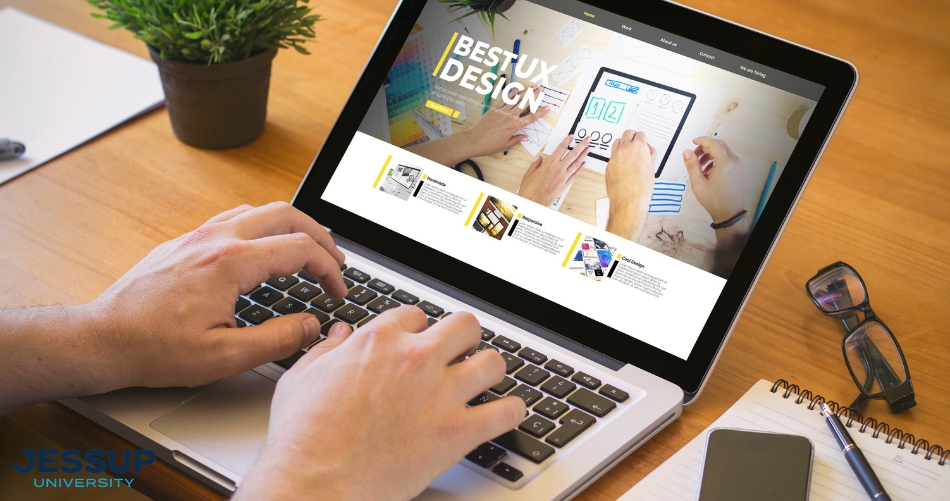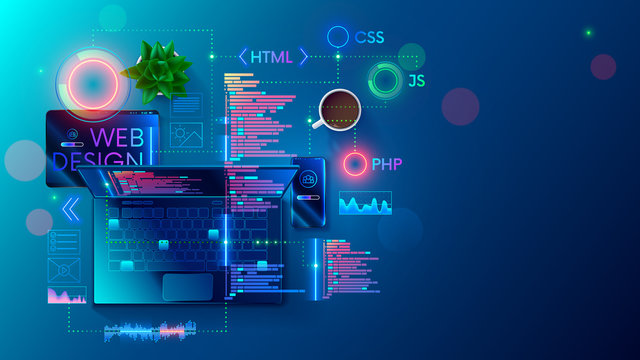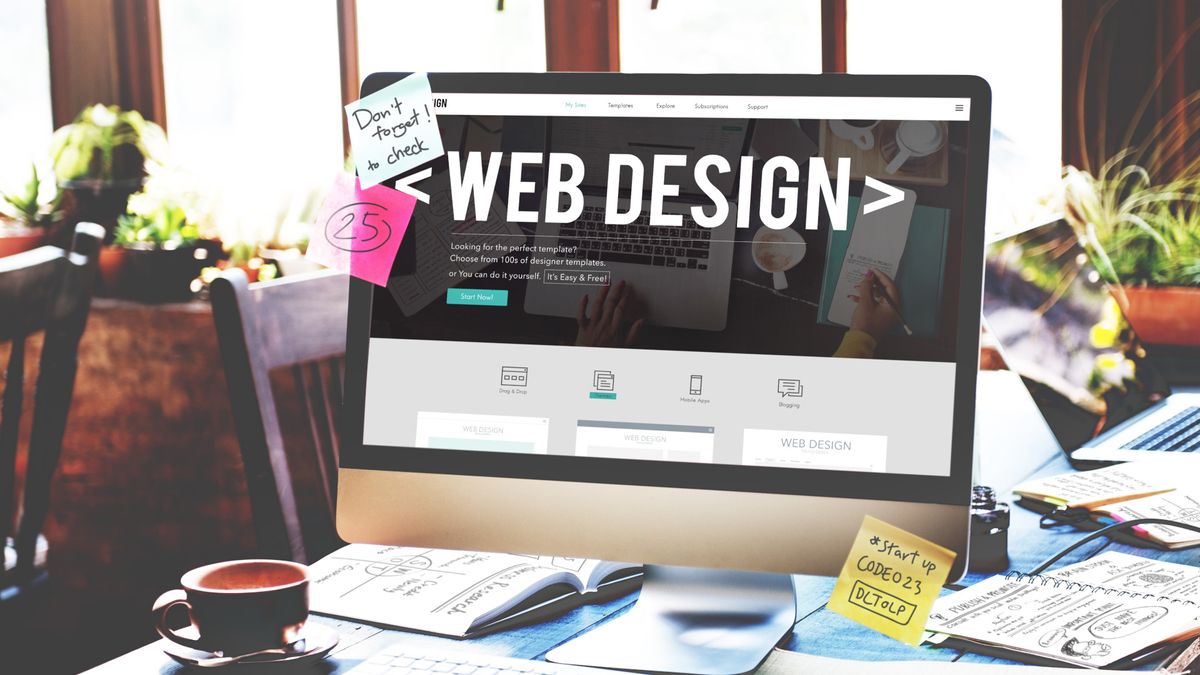The Comprehensive Overview to Creating a Strong Digital Identity with Web Design In Guildford
The Comprehensive Overview to Creating a Strong Digital Identity with Web Design In Guildford
Blog Article
Just How to Improve User Experience Via Strategic Web Design
In the world of digital innovation, user experience (UX) has actually ended up being the linchpin of successful internet style. A tactical, user-centered method, emphasizing aesthetic consistency, intuitive designs, and responsive layout, can substantially boost a web site's functionality and appeal. As we explore these concepts in information, the significance of integrating individual responses and the function of UX in customer retention will additionally be analyzed, welcoming a deeper understanding of this vital aspect of website design.
Understanding the Value of User Experience in Internet Layout
The essence of internet design lies not simply in aesthetic appeals, but fundamentally in the customer experience it offers. Individual experience, or UX, describes the overall experience a person has while engaging with a website or web application, especially in terms of exactly how comfy and pleasing it is to use (Web Design In Guildford). It is an essential aspect of internet layout, as it directly affects the customers' impressions, activities, and general interaction with the site
A properly designed internet site with a poor user experience belongs to a beautiful building with a badly prepared interior; it may look appealing externally, however it falls short to offer its intended purpose efficiently. It might hinder users from remaining on the internet site, causing high bounce prices, low customer involvement, and eventually, failure to accomplish the internet site's objectives. This highlights the importance of integrating user experience into the website design process right from the outset.
Using User-Centered Layout Concepts
The application of user-centered layout concepts starts with comprehending customer actions. This expertise develops the basis for producing an efficient interface design. These 2 crucial elements, when skillfully combined, lead to an enhanced customer experience on any type of site.

Recognizing Individual Behavior
Why do customers behave the means they do on internet sites? Customer habits is dictated by a multitude of variables, principal among them being their particular needs and choices, prior on-line experiences, and total web savviness. The layout of the internet site likewise plays a substantial role. A tidy, instinctive format can guide individuals to act in a certain means, such as leading them toward particular actions or information. Alternatively, a messy or confusing design can prevent communication and lead to high bounce rates. Recognizing user habits includes researching and evaluating these patterns and fads. Using this understanding, internet designers can produce extra effective, easy to use websites that meet the requirements of their target market, thus boosting user experience.
Effective User Interface Layout

Leveraging Responsive Layout for Ideal Viewing
Progressing in the discourse, the attention now changes to the relevance of leveraging receptive design for optimum viewing. This involves exploring the procedure of carrying out responsive internet design and comprehending its influence on customer experience. The following conversation aims to elucidate the benefits of optimum watching and how receptive design facilitates it.
Applying Responsive Web Layout
Utilizing the power of receptive internet design is an essential step towards boosting customer experience. To implement this successfully, internet developers must think about right here a selection of factors. The layout must adjust flawlessly to various screen sizes, from desktop computer monitors to smaller smart phones. This requires a versatile grid-based system, making certain content resizes smoothly. Pictures need to also be versatile, getting used to fit the offered display screen area without distortion. In addition, designers should include media inquiries, allowing the web site to determine the individual's gadget type and screen size. These components incorporated develop a receptive internet style that adapts to the individual's requirements. While the process may seem complex, the end result is an extra instinctive and easily accessible web site, significantly enhancing the user experience.
Benefits of Optimal Watching

Additionally, receptive layout can lead to improved SEO rankings, as search engines favor sites that cater to multiple devices. Finally, it can decrease bounce rates and enhance conversion rates as users are less likely to abandon sites that are easy to navigate. Therefore, ideal watching can substantially improve individual experience, making it an essential aspect of tactical web design.
Incorporating Easy Navigation and Intuitive Layouts
Ease and intuition in website navigation form the bedrock of user contentment. If customers struggle to discover what they are seeking, they are likely to abandon the web site and look for alternatives. A calculated internet style must integrate clear, easy-to-follow navigating and an instinctive layout. This can be accomplished by arranging details in an ordered framework, with the most crucial sections plainly featured.
Straightforward navigating menus, breadcrumb tracks, and clickable switches lead customers via the web site effortlessly. Consistency in style aspects across pages additionally adds to instinctive navigating. Placing the search bar or the purchasing cart symbol in the very same area on every page allows individuals to situate these attributes promptly.
In addition, an instinctive layout is one that expects individual requirements. It puts aspects and info where individuals expect them to be. This decreases the cognitive tons on users, improving their overall experience on the resource site.
The Duty of Visual Style in Individual Experience
While the structure and design of a website are considerable for individual experience, the aesthetic layout plays a similarly essential duty. It is the aesthetic design that originally draws the customer's attention, making it a crucial component in producing an immersive and engaging experience. Aesthetic design elements such as color, typography, pictures, and icons interact the brand's message, develop a state of mind, and overview customers' communications on the web page. A well-executed visual style can not only draw in individuals but also assist them recognize the material far better and browse the website more easily. A inconsistent or cluttered aesthetic style can lead and perplex individuals to a negative customer experience. For that reason, internet designers have to tactically use aesthetic style elements to develop a user-friendly and harmonious interface that improves the total individual experience. This process requires a deep understanding of the target customers, their demands, and preferences, along with the brand's identity and objectives.
Case Studies: Effective Customer Experience Design in Action
In spite of the academic expertise on user experience style, it obtains real value when used in functional situations. 2 noteworthy study highlight this. Airbnb, a worldwide online market, efficiently improved their customer experience by redesigning their web site. By concentrating on individual responses, they developed a much more intuitive, user-friendly interface that significantly improved booking experiences. This caused boosted customer contentment and conversion prices.
In one more instance, the New York Times upgraded their website to prioritize user experience. They enhanced their site for mobile use, recognizing that a growing number of their viewers gain access to news via smart devices - Web Design In Guildford. They likewise streamlined their material presentation, making it easier for site visitors to navigate and locate appropriate short articles. The outcomes were a considerable increase in mobile website traffic and individual involvement, showing the efficacy of strategic internet design in boosting user experience. These case researches show that useful application of customer experience style can yield significant benefits.
Verdict
To conclude, calculated web style is an essential tool in improving customer experience. By applying user-centric style concepts, leveraging responsive design, integrating instinctive navigation and layouts, and using the power of aesthetic design, services can develop websites that are pleasing and involving for customers. Effective web style, showcased via numerous effective study, dramatically increases individual interaction and retention prices, confirming its essential role in digital success.
As we check out these concepts in information, the relevance of integrating customer responses and the function of UX in customer retention will additionally be examined, inviting a much deeper understanding of this crucial aspect of web design.
It may deter users go to this website from staying on the website, leading to high bounce prices, reduced customer involvement, and inevitably, failing to accomplish the site's goals. A cluttered or inconsistent aesthetic style can lead and perplex customers to an adverse individual experience. Web designers must purposefully make use of visual design elements to develop a unified and user-friendly user interface that boosts the total individual experience. The results were a significant boost in mobile web traffic and customer involvement, demonstrating the efficiency of critical internet layout in enhancing individual experience.
Report this page